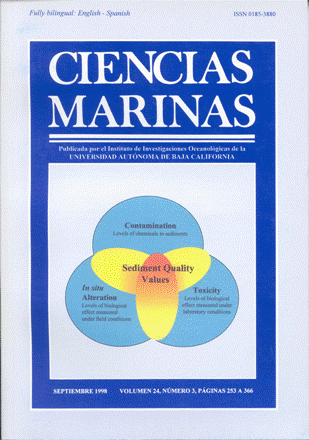Effect of three different feeding strategies on phytoplankton, zooplankton and benthos in pacific brown shrimp Penaeus californiensis (Holmes 1900) farming ponds
Main Article Content
Abstract
An experimental study was conducted during 23 weeks in Bahia Kino, Sonora (Mexico), to evaluate the effect of three different feeding strategies used in the culture of Pacific brown shrimp, Penaeus californiensis, on the abundance of phytoplankton, zooplankton and benthos. The use of feeding trays (treatment FT) and the complementation of natural food (treatment CNF) promoted a higher abundance of zooplankton and benthic organisms in the ponds. The use of feeding tables (treatment FTA) enhanced the abundance of benthic polychaete species. There were no differences among treatments with respect to chlorophyll a concentration. Growth and yield were higher and feeding conversion ratios lower in treatments CNF and FT. This seems to be related to the higher abundance of zooplankton and benthic organisms in these treatments. Some water quality parameters were also affected by the feeding strategy.
Downloads
Article Details
This is an open access article distributed under a Creative Commons Attribution 4.0 License, which allows you to share and adapt the work, as long as you give appropriate credit to the original author(s) and the source, provide a link to the Creative Commons license, and indicate if changes were made. Figures, tables and other elements in the article are included in the article’s CC BY 4.0 license, unless otherwise indicated. The journal title is protected by copyrights and not subject to this license. Full license deed can be viewed here.

